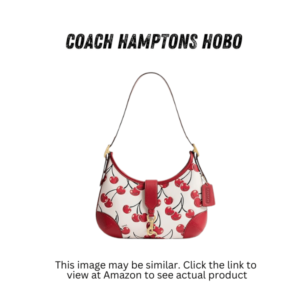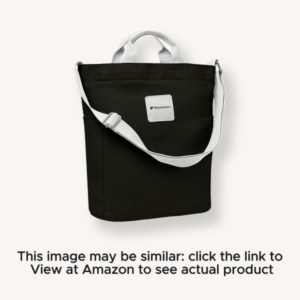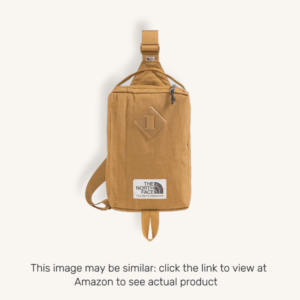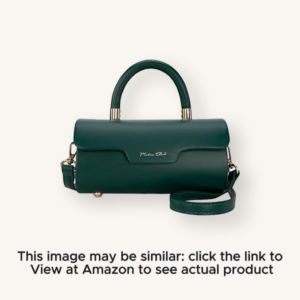A Comprehensive Guide to Bag Materials: The Foundation of Durable and Stylish Designs
When it comes to crafting high-quality bags, the choice of materials plays a pivotal role in determining not only their durability but also their aesthetic appeal. When you’re designing backpacks, sling bag, travel bags, or handbags.
Understanding the different types of fabrics and their unique properties can help you create products that meet both functional and stylistic demands. Let’s delve into the world of bag materials and explore their applications, benefits, and considerations in greater depth.
Explore the Biggest Style Handbag Trends in 2025 and elevate your accessory game!
1. Exterior-Facing Materials: Strength Meets Style
The exterior-facing materials of a bag form its first line of defense against wear and tear while also defining its overall look. Selecting the right material can significantly enhance the durability, versatility, and visual appeal of your design.
Don’t get fooled by counterfeit products! Our guide on how to spot a fake Coach bag will teach you to identify genuine Coach features, including stitching, hardware, and serial numbers. Protect your investment with these essential tips!
To dive deeper into the intricate details of handbag design and learn how to measure them for your needs, explore the Anatomy and Measurement of a Handbag.
Below are some of the most popular options:
1.1. Cordura Nylon

Known for its exceptional durability and abrasion resistance, Cordura Nylon is a staple in the bag industry. This material combines ruggedness with lightweight properties, making it a go-to choice for outdoor and adventure-oriented products.
- Applications: Backpacks, military-grade bags, and outdoor gear.
- Advantages: Tear-resistance, lightweight structure, and easy maintenance. Ideal for high-performance use in harsh conditions.
- Considerations: Its slightly rough texture might not be suitable for high-fashion or luxury bags but works perfectly for rugged designs.
1.2. Ripstop Nylon

Ripstop Nylon is designed with a unique grid-like weave pattern that provides enhanced resistance to tearing and ripping, making it a popular choice for lightweight yet durable bags.
- Applications: Outdoor backpacks, sports bags, and lightweight travel bags.
- Advantages: Lightweight yet highly durable, resistant to harsh weather conditions, and available in a variety of functional designs.
- Considerations: Limited color options compared to other nylons might restrict its use in fashion-forward designs.
1.3. Ballistic Nylon

This thick, synthetic nylon fabric is renowned for its ruggedness and longevity. Originally developed for military applications, Ballistic Nylon offers superior strength and resilience.
- Applications: Travel luggage, laptop bags, and military-grade products.
- Advantages: Extremely durable, easy to clean, and impact-resistant, making it perfect for heavy-duty use.
- Considerations: Higher cost due to its premium quality, but it’s an investment that pays off for long-term use.
View at Amazon
1.4. Mesh Fabric

Mesh fabrics made from jersey, gauze, or polyester, provide versatility and breathability. These are often used as accents or in functional components like pockets and collapsible sections.
- Applications: Pockets, liners, and collapsible sections of bags.
- Advantages: Lightweight, stretchable, and visually appealing. Mesh adds an airy and functional touch to designs.
- Considerations: Requires additional reinforcement to prevent fraying or tearing when used in stress areas.
View at Amazon
1.5. PVC Laminates

Polyvinyl Chloride (PVC) laminates enhance other fabrics, such as polyester or nylon, with properties like water resistance and vibrant finishes. This material is ideal for combining functionality with modern aesthetics.
- Applications: Urban backpacks, fashion-forward designs, and technical travel bags.
- Advantages: Waterproofing, structure enhancement, and vibrant, eye-catching finishes make it suitable for urban consumers.
- Considerations: Adds weight and stiffness, which may limit its use in flexible designs.
View at Amazon
2. Interior Materials: Lining and Support Layers
The inner layers of a bag are just as crucial as the exterior. These materials ensure the bag’s contents remain secure and organized while also adding a layer of protection and comfort.
2.1. Nylon and Polyester Linings

These materials are among the most common choices for bag linings due to their cost-effectiveness and lightweight durability.
- Applications: Inner compartments of handbags, backpacks, and travel bags.
- Advantages: Water-resistant properties, smooth texture, and availability in a wide range of colors and patterns.
- Considerations: Woven patterns may unravel without proper treatment, so care in manufacturing is essential.
2.2. Bonded Leather

Bonded leather, crafted from leftover scraps of genuine leather, is both eco-friendly and practical for interior components in high-end designs.
- Applications: High-end handbags, structured totes, and luxury luggage.
- Advantages: Elastic, durable, and resistant to water damage, making it a perfect blend of luxury and utility.
- Considerations: Slightly less premium compared to full-grain leather, but an excellent alternative for eco-conscious consumers.
View at Amazon
2.3. EVA Foam

Ethylene Vinyl Acetate (EVA) foam is commonly used as padding material to provide structure, comfort, and shock absorption.
- Applications: Backpack straps, base panels, and padding sections.
- Advantages: Lightweight, shock-absorbent, and versatile. It ensures comfort during extended use.
- Considerations: Limited thermal resistance may not be suitable for extreme climates but works well for most general purposes.
View at Amazon
3. Structural Components: Stabilizing the Bag
Stabilizing materials play a vital role in maintaining the shape, functionality, and longevity of bags. They are particularly important for structured designs.
3.1. PVC Coatings

PVC coatings are widely used to add stiffness, improve waterproofing, and enhance the durability of bag materials.
- Applications: Minimalistic bags, technical backpacks, and urban designs.
- Advantages: Cost-effective and reliable, PVC coatings improve structural integrity while protecting against water damage.
- Considerations: Adds weight, which may not be ideal for ultra-lightweight products.
3.2. Fiberglass and Regenerated Leather

These premium materials are used to enhance the structural integrity of luxury bags, making them more durable and visually appealing.
- Applications: Handbags, luxury totes, and high-fashion designs.
- Advantages: Offers unmatched structure, longevity, and an elevated aesthetic. Fiberglass is particularly popular in high-end products.
- Considerations: Higher production costs, but the value they add to the final product is significant.
4. Key Considerations for Designers
When selecting bag materials, designers should carefully evaluate their choices to ensure the final product meets the desired specifications. Here are some factors to consider:
- Purpose: Is the bag intended for daily use, travel, or outdoor activities? For example, materials like Ballistic Nylon or Ripstop Nylon excel in rugged environments, while Bonded Leather offers a more refined look.
- Durability: Will the bag be exposed to heavy wear and tear? Opt for Cordura Nylon or PVC-coated fabrics for long-lasting performance.
- Aesthetics: Does the material align with the target audience’s taste? Materials like mesh and vibrant PVC laminates offer innovative stylistic opportunities.
- Budget: High-end materials like regenerated leather and fiberglass are more expensive but add unparalleled value and appeal to premium designs.
- Sustainability: Eco-conscious consumers increasingly value sustainable materials, such as bonded leather or recycled polyester, making these options a wise choice for modern designs.
Conclusion: Crafting the Perfect Bag
Designing a bag is an intricate process that requires balancing multiple factors, from functionality to visual appeal. By understanding the unique properties of various materials, designers can create products that not only meet consumer needs but also stand out in the competitive market.
Every material brings its own set of strengths to the table from the rugged resilience of Cordura Nylon to the luxurious finish of bonded leather
If you are an established designer or a newcomer, prioritizing quality, innovation, and practicality is the key to creating timeless pieces.
You can craft bags that are not only durable and functional but also stylish and sustainable with thoughtful material choices, leaving a lasting impression on your customers.
FAQs: Your Guide to Bag Materials and Quality
What is the best fabric for a bag?
The best fabric for a bag depends on its intended use.
- Canvas is durable, lightweight, and perfect for casual and outdoor bags.
- Leather is timeless, elegant, and highly durable, making it ideal for luxury and formal bags.
- Nylon offers water resistance and durability, great for travel and sports bags.
Which bag material is best?
There isn’t a single best material it’s all about your needs!
- For daily use: Canvas or polyester for practicality.
- For travel: Nylon for water resistance and durability.
- For style: Leather or vegan alternatives for elegance and sustainability.
How can you tell a good quality bag?
A high-quality bag exhibits:
- Sturdy stitching: Even and reinforced seams.
- Premium materials: Leather, high-grade canvas, or nylon.
- Functional hardware: Smooth zippers and durable buckles.
Is canvas better than leather?
It depends on what you’re looking for:
- Canvas: Lightweight, affordable, and easy to clean. Ideal for casual bags.
- Leather: Luxurious, durable, and long-lasting but requires more care.
What makes a bag high quality?
A high-quality bag stands out through:
- Material: Durable and premium, like full-grain leather or waxed canvas.
- Construction: Strong seams, double stitching, and robust linings.
- Design: Functional yet stylish, with attention to details like hardware.
What material are luxury bags made of?
Luxury bags often use materials like:
- Full-grain leather: Known for durability and patina over time.
- Exotic leathers: Such as crocodile, python, or ostrich for exclusivity.
- High-tech fabrics: Coated canvas or durable nylon in designer collections.





